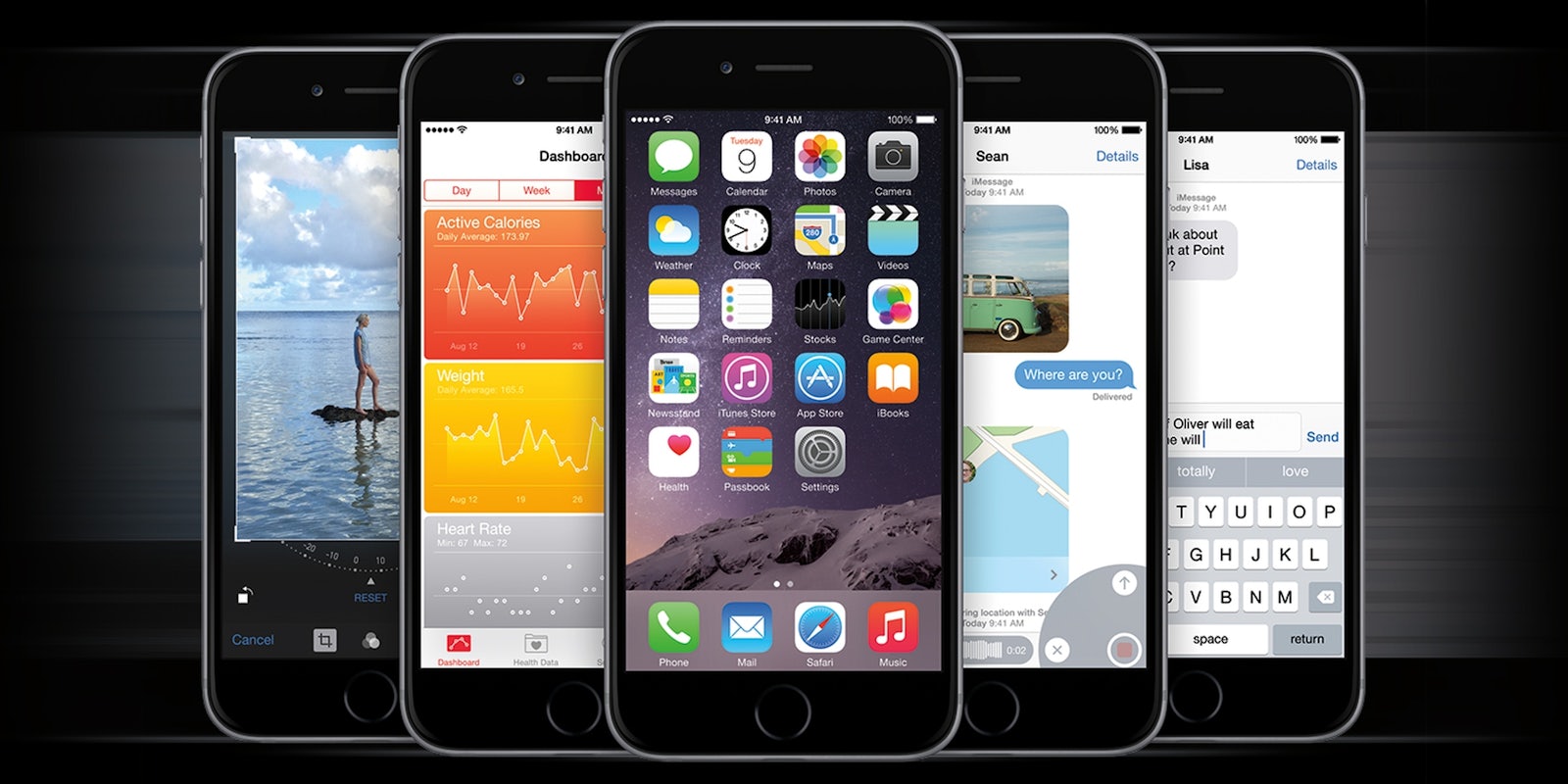iOS 8, the next iteration of Apple‘s mobile operating system is upon us, just a few days before the iPhone 6 hits stores. But if you update your iPhone today, you may not notice much of a difference.
Unlike previous versions of iOS, there is no killer feature in iOS 8. iOS 4 introduced multitasking, iOS 5 had revamped notifications, iOS 6 included Maps (I didn’t say it had to be good), and iOS 7 brought a full redesign.
iOS 8 doesn’t have anything that can be called a flagship feature.
Yes, there are improvements. Notifications and Messages have been improved, the Photos app has been revamped, Spotlight can search the Web, and Handoff allows you to move seamlessly between your iOS device and your Mac with apps like Mail and Safari, but not all iPhone users have Macs.
While you may not notice it when you download it today, what will make iOS 8 substantially better than iOS 7—or any version of iOS before it—is the brand new developer tools Apple has included in the latest version of its software development kit (SDK).
The new features you will use the most are those that require developers to build them into their apps. The new SDK allows for things like Instagram filters to be added directly from the photos app. Third-party keyboards can be added, with popular Android keyboards like Swype and SwiftKey making their way over to iOS.
Notification Center can now run widgets, which can provide helpful information at a glance. With all of the aforementioned features, it requires developers to build them in, and there is no clear timetable when the developer of your favorite app might get around to doing an update for iOS 8.
Unlike iOS 7 last year, there is no stark visual changes that forced developers to update their apps to avoid looking outdated. On top of that, developers aren’t too happy with the way Apple has handled the SDK.
“It’s been a freaking headache,” one developer said to us about the new SDK. The developer also noted that Apple has been less helpful in working with developers to address and fix problems than in the past.
There have been a number of issues with what may be the most used feature in iOS 8—share extensions. That may not sound like much, but share extensions give developers access to the share button that shows up on your iOS device when you’re looking at a photo, video, webpage, or any other shareable item.
Share extensions will allow you to do things like send photos directly to Instagram from the Photos app, easily save articles and videos to Pocket, or send an image in Safari directly to Pinterest.
Developers have had to build a number of workarounds to get share extensions to work properly. Writing about an aspect of the share extensions, Bryan Irace, one of Tumblr’s iOS developers said, “We have not been able to get this to actually work.”
This leaves users with two roadblocks to the ideal version of iOS 8: Developers have less of an incentive to update their apps, and if they do decide to update quickly, they have to deal with issues in the SDK.
While the first few weeks of iOS 8 may not meet the public’s expectations of an Apple update, over time, iOS 8 may show itself to be the strongest version yet. iOS 8 has all the features people have asked for, but it may take time for them to show up on your device, depending on what apps you use.
Finally giving developers the tools to make better apps will undoubtedly benefit Apple in the long run. What won’t help the company is not providing a smooth-running SDK, which may limit the number of apps that update at launch. iOS 8 is a great operating system that will get better, but it won’t blow you away today.
Photo via Apple.com | Remix by Jason Reed


